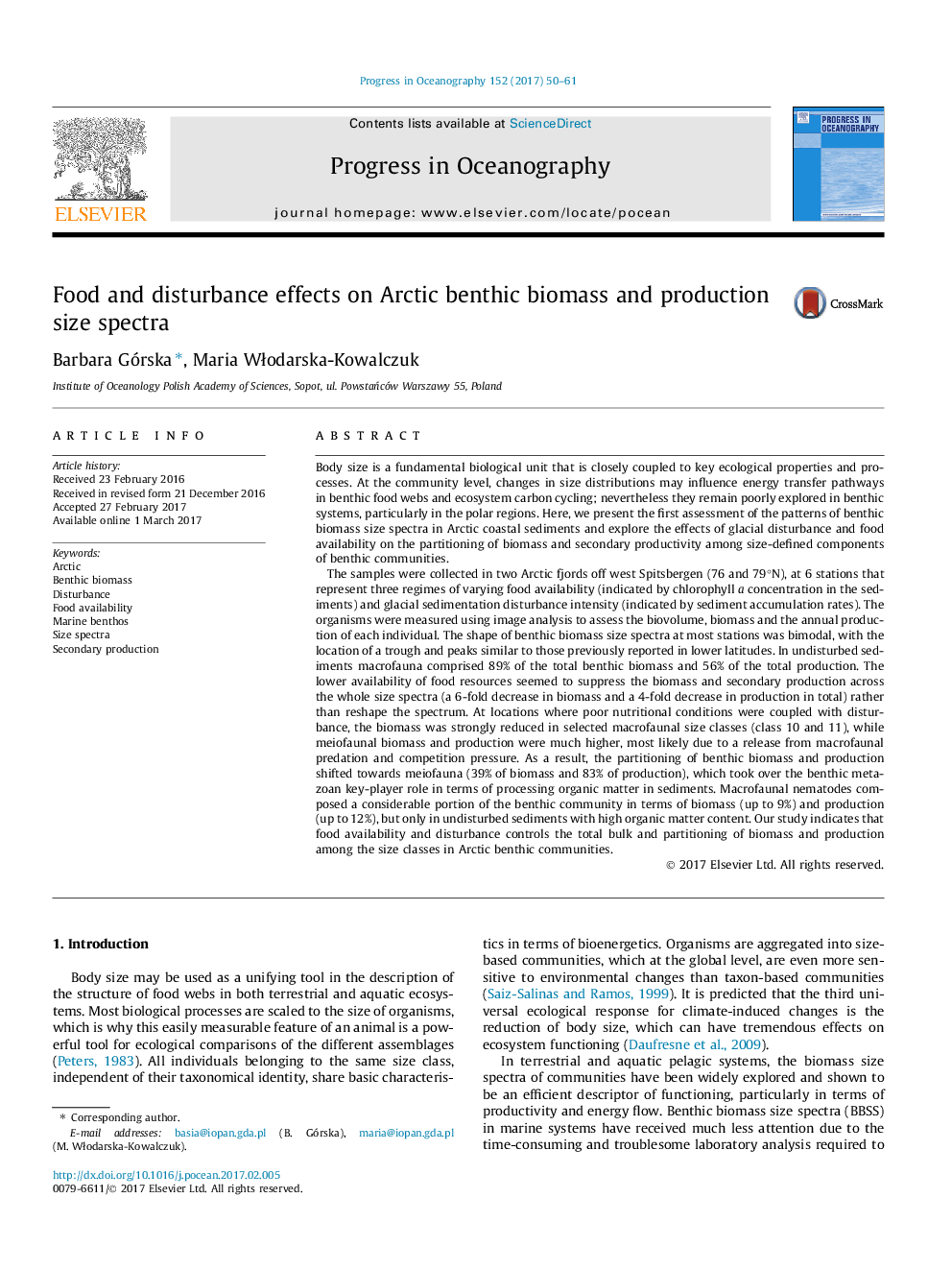| کد مقاله | کد نشریه | سال انتشار | مقاله انگلیسی | نسخه تمام متن |
|---|---|---|---|---|
| 5766545 | 1627906 | 2017 | 12 صفحه PDF | دانلود رایگان |
- Arctic benthic biomass size spectra resemble those in lower latitudes.
- Low food induced the reduction of biomass and production across the whole size spectrum.
- Low food combined with disturbance reduced biomass in the larger macrofaunal size classes.
- Meiofauna tends to dominate benthic biomass and production in disturbed conditions.
Body size is a fundamental biological unit that is closely coupled to key ecological properties and processes. At the community level, changes in size distributions may influence energy transfer pathways in benthic food webs and ecosystem carbon cycling; nevertheless they remain poorly explored in benthic systems, particularly in the polar regions. Here, we present the first assessment of the patterns of benthic biomass size spectra in Arctic coastal sediments and explore the effects of glacial disturbance and food availability on the partitioning of biomass and secondary productivity among size-defined components of benthic communities.The samples were collected in two Arctic fjords off west Spitsbergen (76 and 79°N), at 6 stations that represent three regimes of varying food availability (indicated by chlorophyll a concentration in the sediments) and glacial sedimentation disturbance intensity (indicated by sediment accumulation rates). The organisms were measured using image analysis to assess the biovolume, biomass and the annual production of each individual. The shape of benthic biomass size spectra at most stations was bimodal, with the location of a trough and peaks similar to those previously reported in lower latitudes. In undisturbed sediments macrofauna comprised 89% of the total benthic biomass and 56% of the total production. The lower availability of food resources seemed to suppress the biomass and secondary production across the whole size spectra (a 6-fold decrease in biomass and a 4-fold decrease in production in total) rather than reshape the spectrum. At locations where poor nutritional conditions were coupled with disturbance, the biomass was strongly reduced in selected macrofaunal size classes (class 10 and 11), while meiofaunal biomass and production were much higher, most likely due to a release from macrofaunal predation and competition pressure. As a result, the partitioning of benthic biomass and production shifted towards meiofauna (39% of biomass and 83% of production), which took over the benthic metazoan key-player role in terms of processing organic matter in sediments. Macrofaunal nematodes composed a considerable portion of the benthic community in terms of biomass (up to 9%) and production (up to 12%), but only in undisturbed sediments with high organic matter content. Our study indicates that food availability and disturbance controls the total bulk and partitioning of biomass and production among the size classes in Arctic benthic communities.
Journal: Progress in Oceanography - Volume 152, March 2017, Pages 50-61
